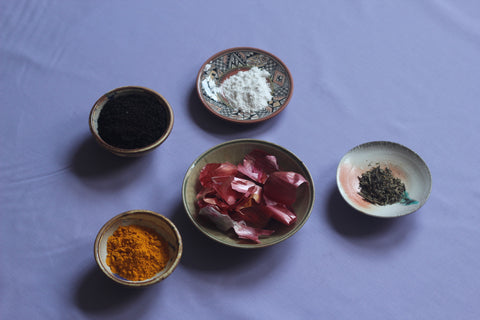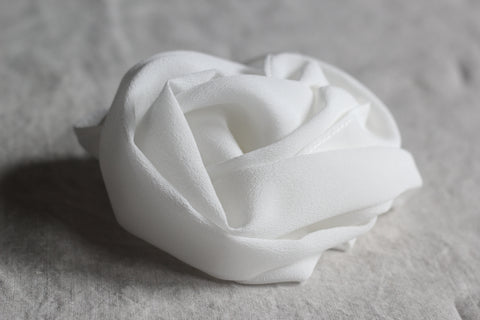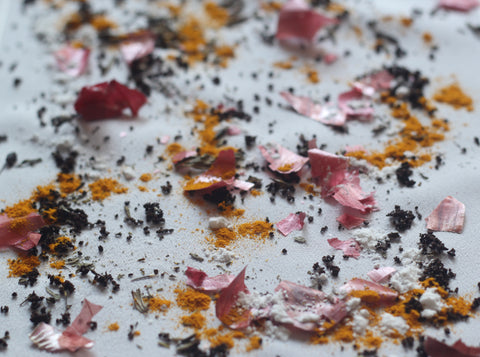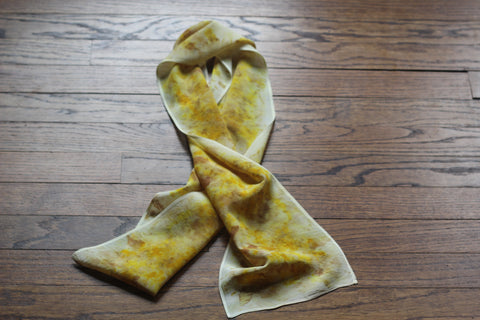I have been enchanted with natural dyes for many years, the history, chemistry, and artisanry keep me constantly learning. Dyeing for experimentation is very different than dyeing for production, and both are equal parts whimsical, challenging, and rewarding.
Eco dyeing, also known as bundle dyeing, is a method to transfer pigment from botanical materials (e.g. flowers, barks, vegetable skins, etc.) directly onto fabric, creating one-of-a-kind colors and patterns on your textiles.
A wide variety of flowers, animals, and barks are used for natural dyes all over the world. Prior to 1856, when the first synthetic dye was discovered, natural dyes were the only method of getting color onto fabric. Natural dyes are unable to adhere to the fabric by themselves, so we use a mordant to allow the dye to “bite” the fabric.
Keep in mind, natural dye materials vary in color depending on regions, harvest seasons, and weather- part of its beauty is that no two dye batches will ever dye exactly the same.
Due to the current shelter-in-place rules, I’ve had to get creative with dyeing out of my home. Since I’m using dyes in my home cooking pots, it’s imperative that I am working with supplies that are food safe. Luckily there are a ton of natural dyes and modifiers that are easily found in my kitchen! In this project, I am using red onion skins, turmeric, used coffee grinds, and pericón flowers as my dyes, and cream of tartar as my modifier to make a gorgeous eco-dyed silk scarf.
To get started, I always mordant my pre-washed fabric. Because I’m using silk, a protein fiber, traditional alum is a perfect mordant. For this project, I’m cooking my fabric for about an hour to ensure a strong “bite” between the alum and silk.
Once my silk is prepped for dyeing, I’m scattering all of my kitchen goodies across the scarf. I personally love the impressionistic look of random placement, but intentional and thoughtful placement can also be totally gorgeous. One of my favorite things about natural dyes is that there really isn’t a wrong way to do it! Even when my pieces don’t come out how I expect them to, they are always beautiful and always worth my effort.
Once I have my dyes where I want them, my scarf is ready to bundle. This time I used a takeout chopstick to make my bundle extra tight, but if my scarf had been any bigger, it would have been fine to simply role it on itself.
I roll my fabric super tight around the chopstick and bind it to create as much contact as possible between the silk and the dyestuff.
I steam my bundle, then let it cure overnight. This allows the pigment to transfer directly from the botanicals to the silk.
Once my fabric has had time to cure, I unroll it and wash out any excess pigment.
And voila! I have a stunning eco dyed scarf using food extras I found in my kitchen.









